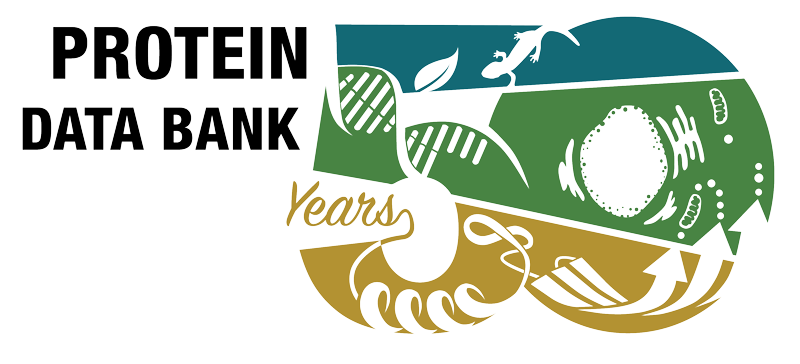Reviews - 2sqc mentioned but not cited (2)
- Monotopic Membrane Proteins Join the Fold. Allen KN, Entova S, Ray LC, Imperiali B. Trends Biochem Sci 44 7-20 (2019)
- Overview of protein structural and functional folds. Sun PD, Foster CE, Boyington JC. Curr Protoc Protein Sci Chapter 17 Unit 17.1 (2004)
Articles - 2sqc mentioned but not cited (11)
Reviews citing this publication (29)
- Cyclooxygenases: structural, cellular, and molecular biology. Smith WL, DeWitt DL, Garavito RM. Annu Rev Biochem 69 145-182 (2000)
- Helical membrane protein folding, stability, and evolution. Popot JL, Engelman DM. Annu Rev Biochem 69 881-922 (2000)
- Structural and Chemical Biology of Terpenoid Cyclases. Christianson DW. Chem Rev 117 11570-11648 (2017)
- Triterpene biosynthesis in plants. Thimmappa R, Geisler K, Louveau T, O'Maille P, Osbourn A. Annu Rev Plant Biol 65 225-257 (2014)
- On the origins of triterpenoid skeletal diversity. Xu R, Fazio GC, Matsuda SP. Phytochemistry 65 261-291 (2004)
- Biogenesis, molecular regulation and function of plant isoprenoids. Bouvier F, Rahier A, Camara B. Prog Lipid Res 44 357-429 (2005)
- Terpenoid synthase structures: a so far incomplete view of complex catalysis. Gao Y, Honzatko RB, Peters RJ. Nat Prod Rep 29 1153-1175 (2012)
- A case study in biomimetic total synthesis: polyolefin carbocyclizations to terpenes and steroids. Yoder RA, Johnston JN. Chem Rev 105 4730-4756 (2005)
- Endogenous synthesis of coenzyme Q in eukaryotes. Tran UC, Clarke CF. Mitochondrion 7 Suppl S62-71 (2007)
- Terpene biosynthesis: modularity rules. Oldfield E, Lin FY. Angew Chem Int Ed Engl 51 1124-1137 (2012)
- New insight into the structure and function of the alternative oxidase. Berthold DA, Andersson ME, Nordlund P. Biochim Biophys Acta 1460 241-254 (2000)
- Enzymatic synthesis of cyclic triterpenes. Abe I. Nat Prod Rep 24 1311-1331 (2007)
- Protein prenyltransferases. Maurer-Stroh S, Washietl S, Eisenhaber F. Genome Biol 4 212 (2003)
- What can a chemist learn from nature's macrocycles?--a brief, conceptual view. Wessjohann LA, Ruijter E, Garcia-Rivera D, Brandt W. Mol Divers 9 171-186 (2005)
- Squalene-hopene cyclases. Siedenburg G, Jendrossek D. Appl Environ Microbiol 77 3905-3915 (2011)
- Crystal structure of human monoamine oxidase B, a drug target enzyme monotopically inserted into the mitochondrial outer membrane. Binda C, Hubálek F, Li M, Edmondson DE, Mattevi A. FEBS Lett 564 225-228 (2004)
- Comparison of the properties of prostaglandin H synthase-1 and -2. Kulmacz RJ, van der Donk WA, Tsai AL. Prog Lipid Res 42 377-404 (2003)
- Structure and regulation of mammalian squalene synthase. Tansey TR, Shechter I. Biochim Biophys Acta 1529 49-62 (2000)
- Membrane-binding and enzymatic properties of RPE65. Kiser PD, Palczewski K. Prog Retin Eye Res 29 428-442 (2010)
- Mutagenesis approaches to deduce structure-function relationships in terpene synthases. Segura MJ, Jackson BE, Matsuda SP. Nat Prod Rep 20 304-317 (2003)
- Enzyme mechanisms for triterpene cyclization: new pieces of the puzzle. Wendt KU. Angew Chem Int Ed Engl 44 3966-3971 (2005)
- Structural commonalities among integral membrane enzymes. Bracey MH, Cravatt BF, Stevens RC. FEBS Lett 567 159-165 (2004)
- Saccharomyces cerevisiae oxidosqualene-lanosterol cyclase: a chemistry-biology interdisciplinary study of the protein's structure-function-reaction mechanism relationships. Wu TK, Chang CH, Liu YT, Wang TT. Chem Rec 8 302-325 (2008)
- Electrophilic and nucleophilic enzymatic cascade reactions in biosynthesis. Ueberbacher BT, Hall M, Faber K. Nat Prod Rep 29 337-350 (2012)
- Profound insights into squalene cyclization. Poralla K. Chem Biol 11 12-14 (2004)
- Decoding Catalysis by Terpene Synthases. Whitehead JN, Leferink NGH, Johannissen LO, Hay S, Scrutton NS. ACS Catal 13 12774-12802 (2023)
- Class II terpene cyclases: structures, mechanisms, and engineering. Pan X, Rudolf JD, Dong LB. Nat Prod Rep 41 402-433 (2024)
- [Engineering of squalene cyclizing enzymes]. Abe I. Yakugaku Zasshi 128 1109-1118 (2008)
- Mining methods and typical structural mechanisms of terpene cyclases. Huang ZY, Ye RY, Yu HL, Li AT, Xu JH. Bioresour Bioprocess 8 66 (2021)



 PMID:
PMID: 